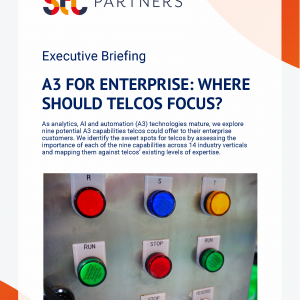The Open Source Telco: Taking Control of Destiny
£1,000.00 excl VAT
Widespread use of open source software is an important enabler of agility and innovation in many of the world’s leading internet and IT players. Yet while many telcos say they crave agility, only a minority use open source to best effect. We examine the barriers and drivers, and outline six steps for telcos to safely embrace this key enabler of transformation and innovation.
Description
Format: PDF filePages: 33 pagesCharts: 19Author: STL research teamPublication Date: November 2015
Table of Contents
- Preface
- Executive Summary
- Introduction
- Open source is less optional than it once was – even for Apple and Microsoft
- Open source is both an old and a new concept for operators
- Key Questions to be Addressed
- Understanding Open Source Software
- The Theory: Freely available, licensed source code
- The Industry: Dominated by key initiatives and contributors
- Research Findings: Evaluating Open Source
- Open source has both advantages and disadvantages
- Debunking Myths: Open source’s performance and security
- Where are telcos using open source today?
- Transformation of telcos’ service portfolios is making open source more relevant than ever…
- … and three key factors determine where operators are using open source software today
- Open Source Adoption: Business Critical vs. Service Area
- Barriers to Telco Adoption of Open Source
- Two ‘external’ barriers by the industry’s nature
- Three ‘internal’ barriers which can (and must) change
- Prospects and Recommendations
- Prospects: An open source evolution, not revolution
- Open Source, Transformation, and Six Key Recommendations
- About STL Partners and Telco 2.0
- About Dialogic
Table of Figures
- Figure 1: Split of Interviewees by Business Area
- Figure 2: Share of consumer electronics shipments* by OS, 2014
- Figure 3: OPNFV Platinum Members
- Figure 4: Different attitudes of operators to open source – selected interview quotes
- Figure 5: The Open IT Ecosystem (incl. key industry bodies)
- Figure 6: Three Forms of Governance in Open Source Software Projects
- Figure 7: Three Classes of Open Source Software License
- Figure 8: Web Server Share of Active Sites by Developer, 2000-2015
- Figure 9: Leading software companies vs. Red Hat, market capitalisation, Oct. 2015
- Figure 10: The Key Advantages and Disadvantages of Open Source Software
- Figure 11: How Google Works – Failing Well
- Figure 12: Performance gains from an open source activation (OSS) platform
- Figure 13: Intel Hardware Performance, 2010-13
- Figure 14: Open source is more likely to be found today in areas which are…
- Figure 15: Framework mapping current telco uptake of open source software
- Figure 16: Five key barriers to telco adoption of open source software
- Figure 17: % of employees with ‘software’ in their LinkedIn job title, Oct. 2015
- Figure 18: ‘Waterfall’ and ‘Agile’ Software Development Methodologies Compared
- Figure 19: Four key cultural attributes for successful telco transformation
Technologies and industry terms referenced include: agility, analytics, Apache, apple, asterisk, AT&T, Cloud, Dialogic, facebook, google, Governance, Innovation, IoT, Linux, media server, microsoft, Network Functions Virtualisation, nfv, NTT Group, Open Daylight, open source, OpenStack, OPNFV, OTT services, Red Hat, SDN, software, Software Defined Networking, software development, standards, Strategy, transformation


